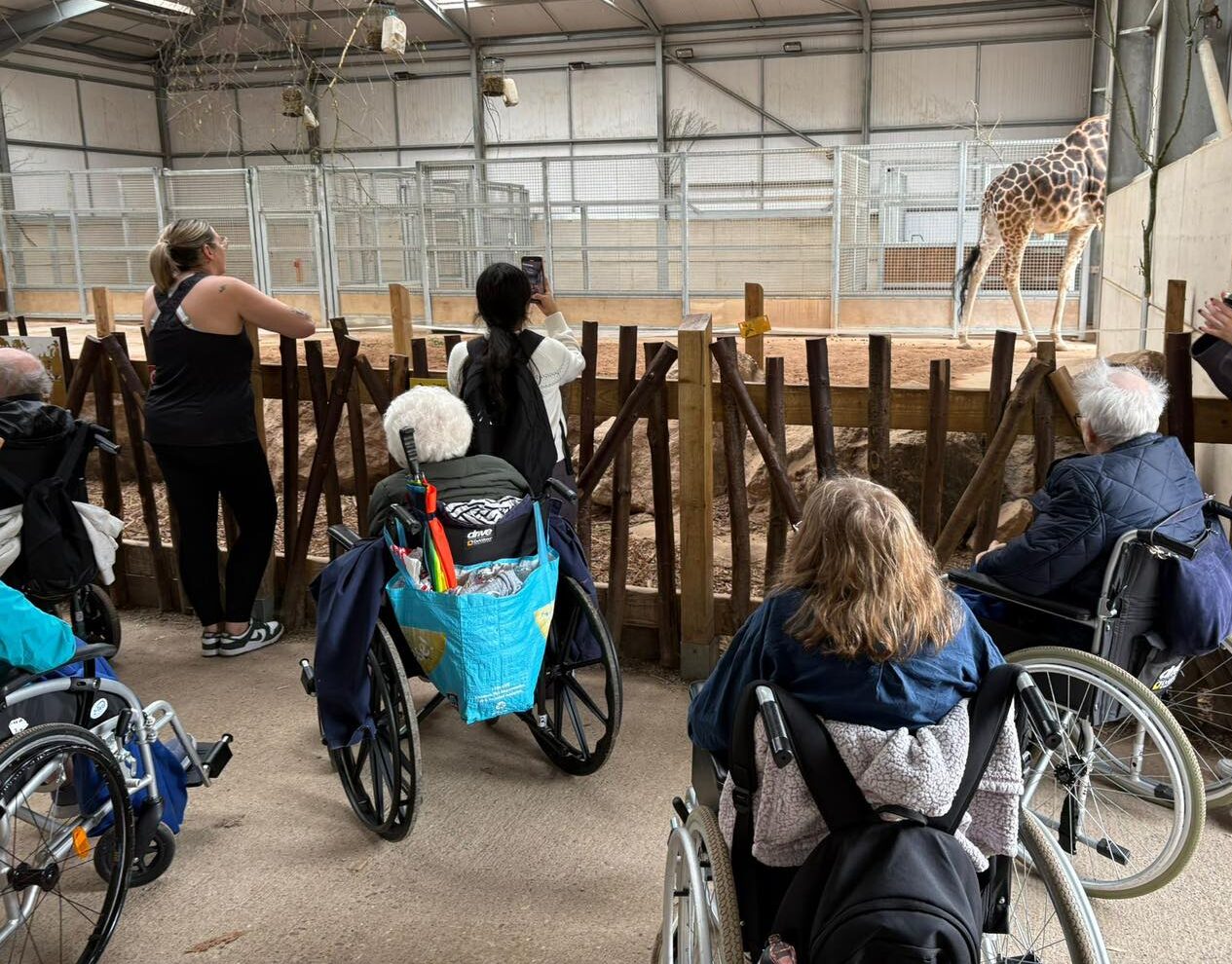Navigating the journey of caregiving is akin to walking a tightrope, where balance is paramount. If you’re grappling with the demands of caring for a senior loved one, respite care might just be the safety net you need. This form of care offers a temporary reprieve, allowing caregivers to recharge while ensuring seniors receive professional support and companionship.
But what exactly encompasses respite care, and how can it transform both your life and that of your elderly loved one? Let’s explore the various facets of this invaluable service, uncovering how it can introduce a breath of fresh air into your caregiving routine.
Key Takeaways
– Respite care offers temporary professional support for seniors, giving caregivers a needed break.
– Costs and types of respite care vary, including in-home services, adult day centres, and short-term stays in facilities.
– Benefits for caregivers include reduced stress and improved well-being, while seniors enjoy social engagement and personalised care.
– Choosing the right respite care requires assessing care needs, costs, and location, alongside researching and seeking recommendations.
Understanding Respite Care
Respite care offers a temporary, compassionate solution for caregivers, providing them with a much-needed break while ensuring seniors receive professional, attentive support. It’s essential to understand the cost considerations and eligibility criteria involved in accessing these services, as they can significantly impact your ability to utilise respite care effectively.
Cost considerations vary widely, depending on the type of care provided and the duration needed. Some programs are funded through state or federal sources, potentially reducing out-of-pocket expenses. However, it’s crucial to research and ask about all possible fees to avoid unexpected costs.
Eligibility criteria for respite care can also differ based on the service provider and funding source. Common factors include the senior’s health condition, the caregiver’s relationship to the senior, and the level of care required. It’s important to thoroughly review these criteria to ensure you or your loved one qualifies for the respite care needed.
Types of Respite Services
To meet the diverse needs of seniors and their caregivers, several types of respite services are available, each offering specialised support and care. Understanding the options can help you choose the best fit for your situation, taking into account service duration and cost considerations.
In-home respite care provides support directly in the senior’s home. This can range from a few hours to overnight stays, allowing for flexibility in service duration to match your needs. Cost considerations here often depend on the level of care required and the hours of service.
Adult day centres offer another form of respite, giving seniors the opportunity to socialise and participate in activities in a safe environment while their caregivers take a break. These centres typically operate during business hours, providing a set service duration each day. Costs are usually calculated on a daily rate.
Short-term stays in assisted living facilities or nursing homes are also available, offering a more comprehensive solution. These stays can last from a few days to several weeks, making them suitable for longer respite periods. Cost considerations for these options often include room and board in addition to care services.
Choosing the right type involves balancing the needs of the senior, the caregiver’s availability, and financial factors.
Benefits for Caregivers
Caring for a senior loved one is a rewarding yet demanding job, and accessing respite care can offer you the essential break you need to recharge and maintain your own well-being. When you’re immersed in the daily tasks of caregiving, it’s easy to overlook the toll it takes on your health and personal life. By embracing respite care, you give yourself the opportunity to rest, pursue personal interests, or simply catch up on sleep, which can significantly reduce caregiver stress.
Moreover, respite care isn’t just beneficial for your physical and emotional health; it also has financial implications. Being a full-time caregiver can limit your ability to work outside the home, which can lead to financial strain. Utilising respite care allows you the flexibility to maintain or seek employment, knowing your loved one is in safe hands. This can alleviate some of the financial pressures associated with caregiving, making it a sensible choice for those balancing care duties with the need for a stable income.
In essence, respite care serves as a vital support system, enabling you to be the best caregiver you can be, without sacrificing your own health and financial stability.
Benefits for Seniors
While the benefits for caregivers are substantial, it’s equally important to consider how respite care positively impacts the well-being of seniors themselves. This form of care not only provides a necessary break for caregivers but also enriches the lives of seniors through social engagement and personalised care.
Social engagement, a key component of respite care, combats loneliness and isolation by connecting seniors with peers and caregivers. This interaction stimulates mental health and fosters a sense of community and belonging. You’ll find that participating in social activities and forming new friendships can significantly uplift your mood and overall outlook on life.
Moreover, respite care’s cost implications are worth noting. It offers a flexible and often more affordable solution to long-term care needs. By opting for respite services, you can manage your expenses more efficiently, ensuring you receive the care you need without the financial strain of continuous, full-time care services. This flexibility allows you to tailor care according to your specific needs and budget, making it a practical choice for many families.
In essence, respite care stands out as a valuable resource for seniors, promoting social interaction and offering a cost-effective way to receive care, thereby enhancing your quality of life.
Finding and Choosing Respite Care
Finding the right respite care involves understanding your specific needs and researching the options available in your community. You’re looking for a solution that not only provides excellent care for your loved one but also fits within your budget and is conveniently located. Here’s how you can make an informed decision:
– Assess Your Needs: Identify the level of care your loved one requires—whether it’s assistance with daily activities, specialised medical attention, or simply companionship. This will narrow down your options significantly.
– Consider Cost Considerations: Respite care costs can vary widely. Look into what your insurance covers, explore any available subsidies, and compare the costs of different services in your area. Remember, the cheapest option isn’t always the best.
– Evaluate Location Preferences: Ideally, the respite care service should be easily accessible to you. Whether it’s in-home care or a facility, consider how the location impacts your ability to visit and interact with your loved one.
Choosing the right respite care is a delicate balance between the needs of your loved one, cost considerations, and location preferences. Take your time, do your homework, and don’t hesitate to ask for recommendations from friends, family, or healthcare providers.
Frequently Asked Questions
How Do I Handle Feelings of Guilt When Considering Placing My Loved One in Respite Care?
You’re not alone in feeling guilty, but remember, prioritising self-care is crucial. Seeking emotional support options can help you process these feelings, ensuring you’re the best caregiver possible for your loved one.
Can Respite Care Be Customised to Accommodate Unique Cultural or Linguistic Needs of Seniors?
Yes, respite care can be tailored like a fine suit to meet unique cultural or linguistic needs. Facilities often offer cultural training and language services, ensuring a comfortable, understanding environment that respects every senior’s heritage.
What Are the Typical Costs Associated With Respite Care, and Are There Financial Assistance Programs Available?
Respite care costs vary, so it’s crucial to do a cost comparison. Insurance coverage can also play a significant role. Thankfully, financial assistance programs are available to help you manage these expenses compassionately and effectively.
How Can Family Dynamics and Responsibilities Change After Introducing Respite Care Into Our Routine?
Introducing new care routines can shift your family dynamics, emphasising the need for effective communication strategies. It’s essential for everyone’s emotional well-being, ensuring responsibilities are shared and understood, enhancing harmony and support within the family.
Are There Any Specific Training or Qualifications That Respite Care Providers Must Have to Cater to Seniors With Cognitive Impairments Like Alzheimer’s or Dementia?
Yes, diving into the heart of your question, respite care providers often need specific training or certification programs, especially for seniors with Alzheimer’s or dementia. These training methodologies ensure compassionate, informed care tailored to individual needs.
Conclusion
In wrapping up, remember that respite care isn’t just a service; it’s a lifeline for both you and your loved one.
With 85% of caregivers reporting improved emotional well-being from using respite services, it’s clear this support is invaluable.
As you venture into finding the right respite care, take heart in knowing it offers a dual benefit: rejuvenating you and enriching the life of your senior.
Choose with care, knowing you’re making a decision that nurtures both of your spirits.




